#indian onager
Note
hello can i have some unicorns :)
Oooh, of course you can! Let me quickly look up some of my favorite sources...

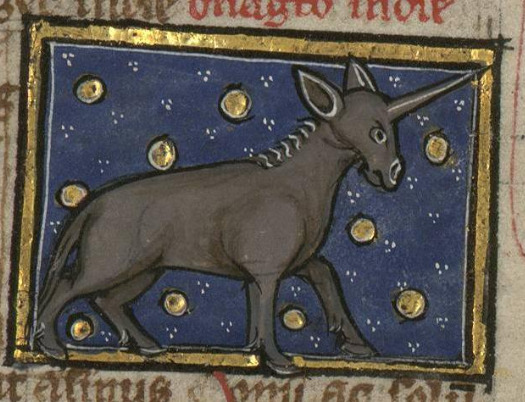

Thomas de Cantimpré has no less than 3 unicorns covered! That's 3 times the amount of unicorns! From top to bottom, you have the monoceros, the Indian onager, and the unicorn itself.
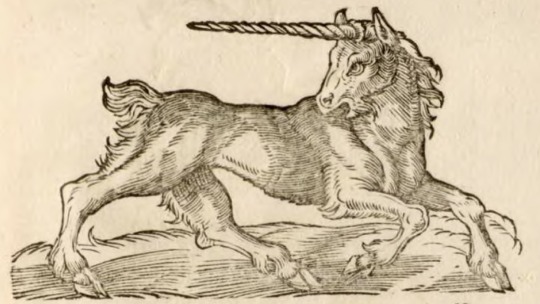
Albertus Magnus gives us this classic animal, looking somewhat heraldic.

This unicorn from the Ortus Sanitatis, though, is rather contemplative looking. And seems rather goaty too.

The rhinoceros (karkadan) from Middle Eastern manuscripts varies a lot, sometimes clearly a rhino and sometimes more fanciful. This version is from a copy of al-Qazwini.
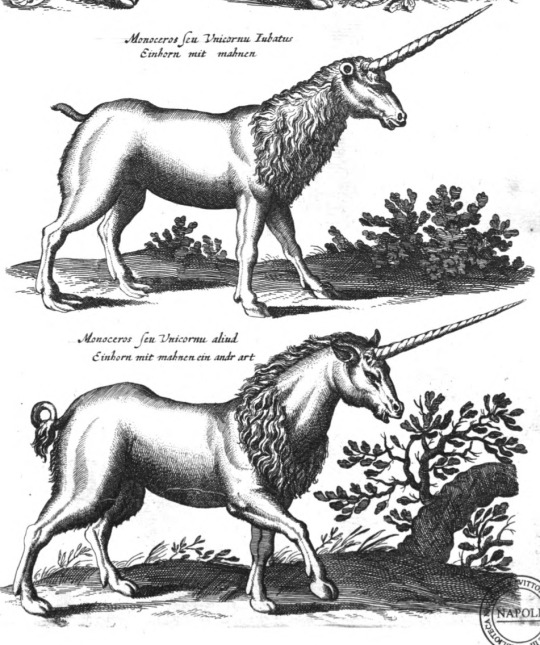
Jonston covers around 9 different unicorns, some of which are horny in more ways than one! (Trust me. Look them up, I've posted them before). These ones look like standard maned unicorns.

Ambroise Paré had a lot to say about unicorns (and mummies, and the plague, and anything else vaguely related to public health). Here is the pirassoipi, a two-horned unicorn (a bicorn?) from Italy

And you know what? I've been sticking to vintage illustrations but here's Rudolf Freund's spectacular historically-accurate unicorn!
Stay tuned for more unicorn imagery!
#unicorns#monoceros#indian onager#bestiary#ambroise paré#thomas de cantimpré#john johnston#albertus magnus#ortus sanitatis#al-qazwini#karkadan#karkadann
368 notes
·
View notes
Text
Anthro Allies Remastered (Part 6)

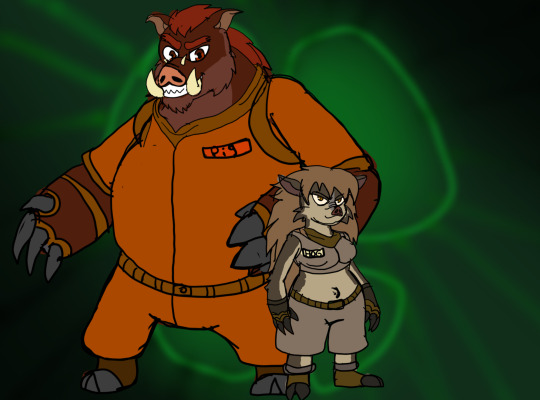
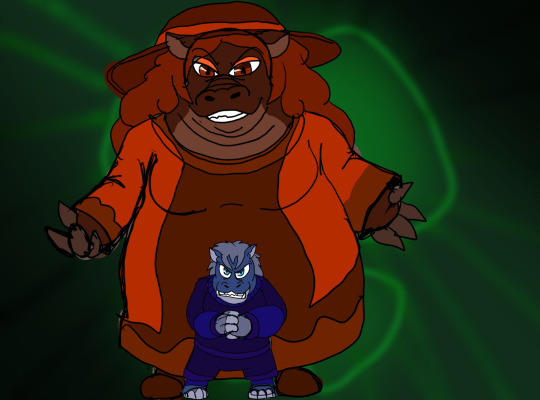
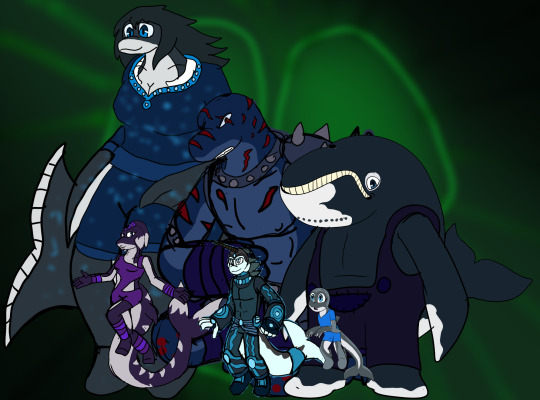



The Fourth and Final part of the Mammals
Camelids
Paco/Cofluffy (Llama/Alpaca/Vicuña/Guanaco)
Rahila (Camel)
Suidae
Darcy (Peccary)
Bruce (Pig/Hog)
Hippopotamidae
Whoopee (Hippopotamus)
Shorts (Pygmy Hippo)
Cetacea
Benjamin/Bellwhal (Narwhal/Beluga)
Kacela (Dolphin/Orca)
Trumble (Bowhead whale)
Sibyl (Porpoise)
Glomar (Sperm Whale)
Foamy (Blue Humpback whale)
Ruminants
Elker (Deer)
Shawnee (Elk)
Algonquin (Moose)
Alpine (Pronghorns)
Vlad (Musk Deer)
Mavis (Chevrotain)
Khalid(Okapi)
Thelma (Giraffe)
Qinicra (Impala/Gazelle)
Richard (Dik Dik)
Woola (Sheep)
Batter(Big horned sheep)
Leapa(Goat)
Ira (Ibex)
Francine (grazing antelope)
Bogen (Bison)
Helga (Musk ox)
Gnu (Wildebeest)
Clara (Cows/Zebu/Gaur/Yak)
Tatanka(Water/ Cape Buffalo)
Equine
Stark (Horse)
Gala (Pony)
Kendoy (Donkey)
Roba (Onager/Kiang)
Cebra (Zebra)
Urara (Golden Zebra)
Rhinocerotidae
Reno/Ivory (White/Black Rhinoceros)
Olga (Indian/Sumatran Rhinoceros)
Tapiridae
Gerard (Malaysian/Baird's Tapir)
Baku (South American/Mountain Tapir)
Previous/Next
(For More Information About The Earthdemons, Neo demons, The Anthro allies , the O'Kong family and more of theses characters as well as updates please visit the @the-earthdemon-hub for more)
#my art#my ocs#elementalgod aj#aj the elementalgod#isle 0#Toonverse Oc#The Watchful Eye#Watchful Eye#O'Kong Family#Earthdemon#Neo Demons#Anthro Allies#Mammals
9 notes
·
View notes
Photo

Indian onager (Equus hemionus khur)
Photo by Jono Dashper
#indian onager#ghudkhur#khur#onager#equus hemionus khur#equus hemionus#equus#equini#equinae#equidae#hippomorphia#perissodactyla#ungulata#euungulata#scrotifera#laurasiatheria#boreoeutheria#eutheria#mammalia#tetrapoda#vertebrata#chordata
64 notes
·
View notes
Photo

Indian Wild Asses (Equus hemionus khur). Photo by Magdaléna Straková.
6 notes
·
View notes
Text

Zoo is done, with two new animals added! Went ahead and made a map if anyone is interested! I'll list the animals for each number in a thread below! If anyone plays Planet Zoo I think I'm gonna upload it to the workshop! You'll need all the DLC and modded animals to open it tho!
Went ahead and listed whether the animals came from the basic game, a certain DLC, or if it is a mod! If you're interested all the mods are from the Planet Zoo page on Nexus Mods!
1. Babirusa (Southeast Asia), 2. Binturong (Southeast Asia), 3. Clouded Leopard (Southeast Asia), 4. Timber Wolf (Base Game), 5. Siberian Tiger (Base Game), 6. Red Panda (Base Game), 7. Snow Leopard (Base Game), 8. Japanese Macaque (Base Game), 9. Giant Panda (Base Game), 10. Bornean Orangutan (Base Game), 11. Bengal Tiger (Base Game), 12. Greater Flamingo (Base Game), 13. Eurasian Lynx (Mod), 14. Marco Polo Sheep (Mod), 15. Reindeer (Arctic), 16. Indian Peafowl Walkthrough (Base Game), 17. Himalayan Brown Bear (Base Game), 18. Dhole (Southeast Asia), 19. Chinese Pangolin (Base Game), 20. Formosan Black Bear (Base Game), 21. Amur Leopard (Mod), 22. Dromedary Camel (Mod), 23. Bactrian Camel (Base Game), 24. Asian Wild Water Buffalo (Mod), 25. Gharial, 26. Gaur (Mod), 27. Harbor Seal (Mod), 28. Indian Elephant (Base Game), 29. Malaysian Tapir (Southeast Asia), 30. Indian Rhinoceros (Base Game), 31. Proboscis Monkey (Southeast Asia), 32. Komodo Dragon (Deluxe Pack), 33. Persian Onager (Mod), 34. Prezwalski's Horse (Mod), 35. Saltwater Crocodile (Base Game), 36. Sun Bear (Southeast Asia), 37. Lesser Flamingo Walkthrough (Mod), 38. Saola (Mod), 39. Asiatic Lion (Mod), 40. Pallas' Cat (Mod), 41. Fennec Fox (Mod), Blue and Green Dots: Giant Malaysian Leaf Insect (Southeast Asia), Yellow Dot: Giant Forest Scorpion (Base Game).
37 notes
·
View notes
Photo

Another unicorn! I based this one on Ancient Greek descriptions of unicorns in India having blue eyes and tri-color red/black/white horns. They also described them as white with red heads, but I didn’t like that so I gave mine the golden-dun color of Indian onagers (wild asses) and the curling ears of the Indian kathiawari horse breed. I picture these sorts living in the steppes and deserts of South Asia, while ones more like sambars (giant black Indian deer) inhabiting the jungles.
Done in Krita, background free from HERE!
3 notes
·
View notes
Photo

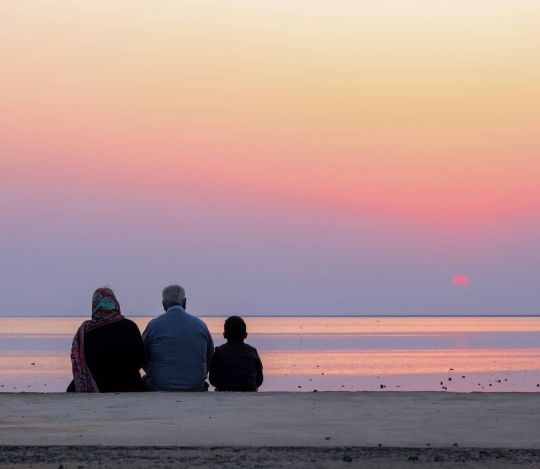
Kutch Rann Utsav 2021 – 22 | White Desert Kutch Rann Utsav
The Great Rann of Kutch is a salt marsh in the Thar Desert in the Kutch District of Gujarat, India. Rann of Kutch is one of the largest salt deserts. kutch its also written as Kachchh, it is one of the few places to spot the Indian onager.
For online booking of rann utsav call us at 1800 270 2700
Visit our website https://www.rannutsav.net/
Stay connected with us!
Facebook: https://www.facebook.com/RannUtsavOfficial
Instagram: https://www.instagram.com/rannutsav/
Twitter: https://twitter.com/therannutsav
Youtube: https://www.youtube.com/user/RannutsavOfficial
#rann of kutch#white desert#kutch rann utsav#rann utsav festival#rann utsav tour packages#rann utsav#kutch festival#rann utsav 2022#rannotsav#dhordo#kutch#white rann#rann utsav 2021#gujarat tourism
0 notes
Photo

'The Indian Ass' also called the Ghudkhur, Khur or Indian onager in the local Gujarati language, is a subspecies of the onager native to Southern Asia. They are found in the Wild Ass Sanctuary of the Little Rann of Kutch, spreading across nearly 5000 square kilometers of the Little Rann, is the only place on earth where the endangered species still lives. It is currently listed as Near Threatened by IUCN. These are More than 4000 in population as per 2009 census. (at Little Rann of Kutch) https://www.instagram.com/p/B-kT04DFuyU/?igshid=719ihs9vtunw
0 notes
Text
Indian Wild Ass
(adsbygoogle = window.adsbygoogle || []).push({});
www.indiasendangered.com
Indian Wild Ass (Equus hemionus khur)
The Indian Wild Ass or Khur is a subspecies of the Asiatic Wild Ass, the Onager.
(adsbygoogle = window.adsbygoogle || []).push({});
Both are classified as Near Threatened (NT) on the IUCN Red List.
Protected under Schedule I of the
Wildlife (Protection) Act 1972, India.
Included on Appendix I of the Convention on International Trade in Endangered Species (CITES),
making international trade in this species illegal
HABITAT Saline deserts (rann), arid grasslands and shrublands are its preferred environments. RANGE Its biggest stronghold is the Indian Wild Ass Sanctuary in Little Rann of Kutch (LRK) in Gujarat, and surrounding areas. The 4954 sq. km sanctuary spreads across Surendranagar, Rajkot, Patan, Banaskantha and Kutch districts.
In recent times, it has extended its range significantly to encompass the Greater Rann of Kutch (GRK), as well as parts of Ahmedabad district. Stragglers have also made their way to neighbouring Rajasthan’s Jalore district. PHYSICAL FEATURES
Are significantly larger than donkeys; are 200-290 kg in size and 2.1-2.5 m in head-body length.
Males are larger than females.
Coat is sandy, and varies from reddish gray, fawn to pale chestnut.
FAST FACTS
The khuur, along with the other subspecies of the Onager, is the most horse-like of the wild ass species.
It is arguably the fastest Indian animal, and can attain a top speed of 70-80 kmph.
Stallions live singly or in small, territorial groups, while large family groups contain mares, foals and juveniles.
Mating occurs during rainy season and stallions battle over mares.
It was once found in Pakistan as far west as Baluchistan, but it has become regionally extinct there due to overhunting and habitat destruction.
POPULATION An estimated 4,800 Khurs exist, up from 4,038 in 2009 and 4,451 in 2013. The overall trend of the population has been upward since the 1970s, and the Indian population is currently the 3rd largest among all Onager subspecies. THREATS
Changing landuse patterns caused by the Mega Narmada Dam Project and the Sardar Sarovar canals.
Illegal salt panning in the LRK, which greatly disturbs the hydrological regime of the Ranns.
Overgrazing and proliferation of the invasive Prosopis Juliflora has greatly reduced the amount of forage available.
Man-animal conflict is on the rise, due to crop raiding by Khurs.
Many highways pass through Khur habitat, increasing risk of traffic-induced mortality.
Image courtesy: https://upload.wikimedia.org/wikipedia/commons/thumb/3/33/Asiatic_Wild_Ass.jpeg/220px-Asiatic_Wild_Ass.jpeg
DOWNLOAD OR GET A PRINT OF THIS FACT SHEET HERE – INDIAN WILD ASS
Indian Wild Ass was originally published on India's Endangered
0 notes
Photo

Indian onager (Equus hemionus khur)
Photo by Jono Dashper
#indian onager#ghudkhur#khur#onager#equus hemionus khur#equus hemionus#equus#equini#equinae#equidae#hippomorphia#perissodactyla#ungulata#euungulata#scrotifera#laurasiatheria#boreoeutheria#eutheria#mammalia#tetrapoda#vertebrata#chordata
31 notes
·
View notes